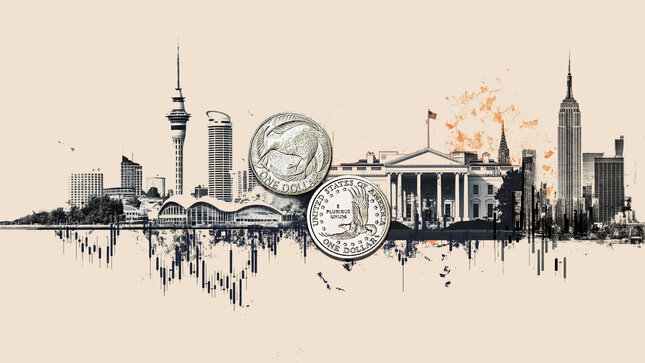NZD/USD hits lows near 0.5625 amid weak New Zealand data, risk aversion

The risk-sensitive Kiwi Dollar is one of the worst performers on Wednesday amid the sour market sentiment and disappointing New Zealand data. The NZD retreated nearly 0.5% on the day against the US Dollar, reaching session lows at 0.5625, a few pips above the seven-month low of 0.5605.
Earlier on Tuesday, New Zealand’s official statistics office revealed that the Producer Price Index grew well below expectations, with Input prices increasing 0.2% in the three months to September, following a 0.6% increase in the previous quarter and undershooting market expectations of a 0.9% increment. Likewise, Output prices grew at a steady 0.6% rate against expectations of a mild acceleration to 0.7%
Producer prices data comes after the RBNZ confirmed that inflation expectations for the last quarter of the year remain anchored near 2% and that unemployment grew to 5.3% in Q3, its highest level in nine years. These figures have boosted investors’ expectations that the central bank will cut interest rates further next week.
In the US, recent macroeconomic releases have not been particularly supportive either. Initial Jobless Claims and ADP Weekly numbers added to evidence of a weak labour market, which prompted investors to build up expectations of a Fed rate cut in December. The US Dollar, however, remains steady, favoured by safe-haven flows with investors awaiting the release of the FOMC minutes later on Wednesday and, above all, September’s Nonfarm Payrolls report on Thursday.
New Zealand Dollar FAQs
The New Zealand Dollar (NZD), also known as the Kiwi, is a well-known traded currency among investors. Its value is broadly determined by the health of the New Zealand economy and the country’s central bank policy. Still, there are some unique particularities that also can make NZD move. The performance of the Chinese economy tends to move the Kiwi because China is New Zealand’s biggest trading partner. Bad news for the Chinese economy likely means less New Zealand exports to the country, hitting the economy and thus its currency. Another factor moving NZD is dairy prices as the dairy industry is New Zealand’s main export. High dairy prices boost export income, contributing positively to the economy and thus to the NZD.
The Reserve Bank of New Zealand (RBNZ) aims to achieve and maintain an inflation rate between 1% and 3% over the medium term, with a focus to keep it near the 2% mid-point. To this end, the bank sets an appropriate level of interest rates. When inflation is too high, the RBNZ will increase interest rates to cool the economy, but the move will also make bond yields higher, increasing investors’ appeal to invest in the country and thus boosting NZD. On the contrary, lower interest rates tend to weaken NZD. The so-called rate differential, or how rates in New Zealand are or are expected to be compared to the ones set by the US Federal Reserve, can also play a key role in moving the NZD/USD pair.
Macroeconomic data releases in New Zealand are key to assess the state of the economy and can impact the New Zealand Dollar’s (NZD) valuation. A strong economy, based on high economic growth, low unemployment and high confidence is good for NZD. High economic growth attracts foreign investment and may encourage the Reserve Bank of New Zealand to increase interest rates, if this economic strength comes together with elevated inflation. Conversely, if economic data is weak, NZD is likely to depreciate.
The New Zealand Dollar (NZD) tends to strengthen during risk-on periods, or when investors perceive that broader market risks are low and are optimistic about growth. This tends to lead to a more favorable outlook for commodities and so-called ‘commodity currencies’ such as the Kiwi. Conversely, NZD tends to weaken at times of market turbulence or economic uncertainty as investors tend to sell higher-risk assets and flee to the more-stable safe havens.